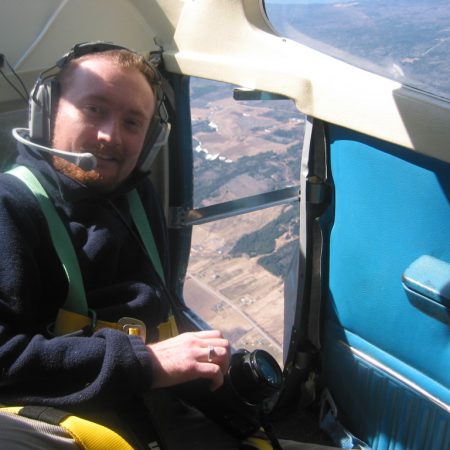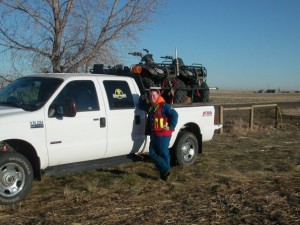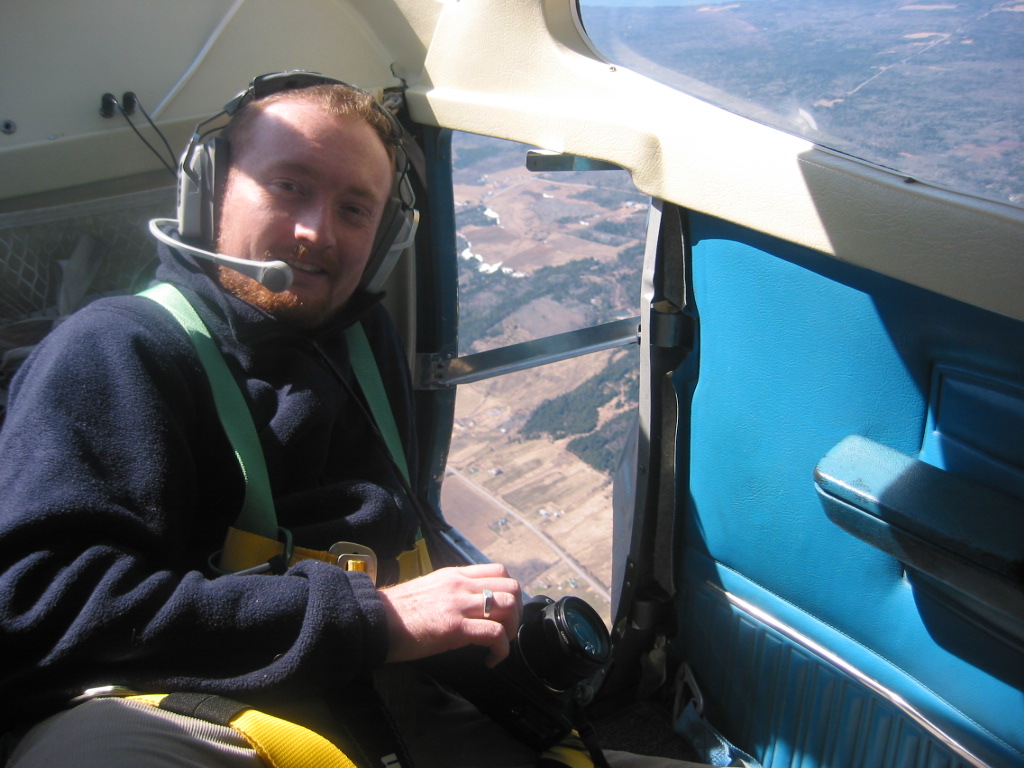Women in Canadian Surveying
GoGeomatics Canada is interviewing Wendy Macisaac of Midwest Surveys Inc. in Calgary, Alberta, about her career and being a female surveyor in a profession long dominated by men.
GoGeomatics: We would like to give our readers some background. Let’s start with some basic career history. Could you tell us where you are from and what lead you to a career in Geomatics?
Wendy: I am from Riverview, New Brunswick. I studied Environmental Science at Saint Mary’s University in Halifax, Nova Scotia. Once I graduated I didn’t have a job lined up in my field, I decided that going to college and taking a trade of some sort might make me more employable in the future. My best friend was going to COGS in the fall to take Remote Sensing and she needed a roommate so I decided to look into the programs offered there. At this time I had no real idea what surveying was. I looked over the COGS recruiting brochure and was intrigue by the surveying courses offered especially by how much of the course involved fieldwork. I love the outdoors and really enjoyed the field work components involved in getting my environmental degree and thought that surveying would be something I would really enjoy. So I registered for the Marine Geomatics program. Once I completed my first diploma I decided to stick around for a second year and got my advanced diploma in Applied Geomatics Research. During my second year at COGS while attending the annual COGS career day I met some recruiters from Midwest Surveys, a survey company based out of Calgary, Alberta. They offered me a job starting as a survey assistant with the plan that I would be running my own crew after about a year. I accepted the position and somehow after studying Marine Geomatics I ended up in land locked Alberta. That was almost 8 years ago and I haven’t looked back since.
GoGeomatics: How many women were in your geomatics program during your training?
Wendy: From what I remember during my two years at COGS the population was around 30% female to 70% male. Some of the programs were pretty evenly split with male and females these were typically the computer based geomatics programs such as GIS, Cartography, and Remote Sensing. However, the geomatics courses that involved field work and lead more so to careers in the field were not as well represented by females. My Marine Geomatics course had only 4 females out of a class of 15 students.
GoGeomatics: How many women do you work with daily that are in geomatics? What is the ratio of men to women in these jobs at work?
Wendy: I currently work with very few women in my day to day work. I am currently going through the articling process to become an Alberta Land Surveyor. Part of this process involves working in the field as a crew chief and in the office as a geomatics technician. With some help from our human resources department I was able to get the male to female ratios for Midwest Surveys for the positions I am and will be working in. Midwest Surveys has 10 offices throughout western Canada and currently has 134 employees working in the field as either crew chiefs or survey assistants. Only 9 of whom are female; 3 crew chiefs and 6 survey assistants. Out of 37 geomatics technician jobs only 5 are female and we currently have 3 professional land surveyors out of 31.
GoGeomatics: Have you seen a change in workplace roles since your career began?
Wendy: I have been with Midwest Surveys for almost 8 years now and have seen a small increase in females working in this industry. I work primarily in oil and gas, the male/female ratio in the field of surveying may be different in other sectors such as those who do municipal work, but I don’t have any experience working in that area so I cannot really comment on it.
GoGeomatics: From your perspective is gender a factor in the geomatics industry?
Wendy: I’d like to say it isn’t a factor but the numbers show that there is still a big gap in the female/ male so it’s definitely still a factor. It is still a male dominated field. I can’t count the number of times I’ve pulled up to a jobsite to meet a client and the client automatically walks over to my male survey assistant assuming that they’re the man in charge. Once they realize their mistake they are usually quick to apologize and then it’s back to work. In the end they don’t usually care who’s doing the job as long as it gets done and done right.
GoGeomatics: Did you have any trouble breaking into this boys club?
Wendy: From my experience some guys don’t want to work with a girl because they think it will make their job more difficult, they don’t think a girl could be capable of handling the physical demands of the job and they don’t want to have to pick up the slack. I might not be the strongest person in the field and it might take me a few extra swings with the sledge hammer to get a pin in the ground but I can complete all the tasks I need to do in the field on my own and I don’t feel I’m a burden to the person I’m working with. Once I proved to the guys that I could handle the physical work involved in working in the field I was pretty much accepted by everyone. It probably didn’t hurt that I wasn’t a girlie girl and I was a big tomboy growing up and always thought of myself as one of guys anyways.
GoGeomatics: Are more women joining the profession?
Wendy: I haven’t seen a drastic jump in the number of women I’ve come across in the industry but I have noticed that when I attend meetings and events in the industry I’m not always the only girl in the room. Also, the number of women getting their commissions as professional land surveyors in the province of Alberta is slowly on the rise. In the last 6 year, 101 males and 10 females received their commissions as Alberta Land Surveyors. As of February of this year there were 110 articling pupils in Alberta 16 of whom were female. This shows that the percentage of women entering surveying is slowly increasing.
GoGeomatics : What schools are out there they can go to to become surveyors?
Wendy: There are several options available. If you want to go to University to get your engineering degree you could attend either the University of New Brunswick or the University of Calgary. There are many colleges that offer diplomas in geomatics program some of which are: the Centre of Geographic Sciences (COGS), the Northern Alberta Instistute of Technology (NAIT), the Southern Alberta Institute of Technology (SAIT) and the British Columbia Institute of Technology (BCIT).
GoGeomatics: What would you say to women who were considering surveying as a career choice.
Wendy: I would tell them what it’s like working in the field and I wouldn’t try and sugar coat it. You can be gone for long periods of time working in remote areas in lots of different conditions. It can be hard finding a work/life balance depending on the type of surveying you get into you could be working 40 to 80 hours a week. That being said if you want a job that involves travel, meeting new people and getting out of the office then surveying might be a good career for you. Surveying offers an interesting and challenging career and is a good career for anyone whether man or woman. There is no reason why women shouldn’t do it.
GoGeomatics: Thank you Wendy for taking the time to share your experiences and thoughts. GoGeomatics is sure your story will inspire more women to join the ranks of Canadian surveyors in a rewarding and lucrative career.










This is a great profile to see, Wendy. I remember meeting you on your first week in the office at MSI an showing you some of our GIS tools. Great work being a successful part of the team there for the long term!